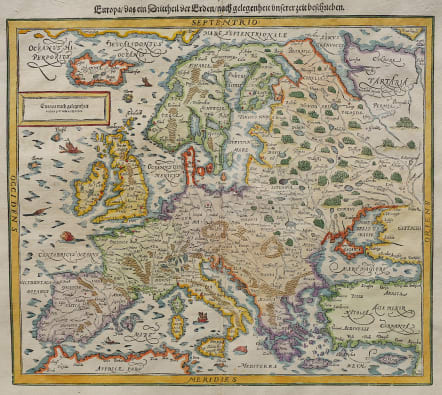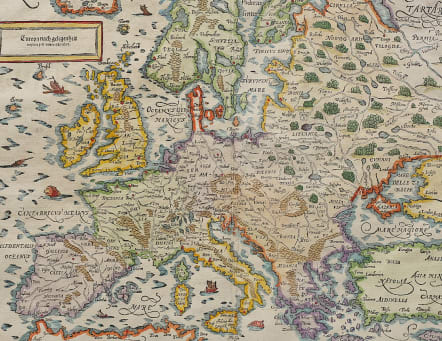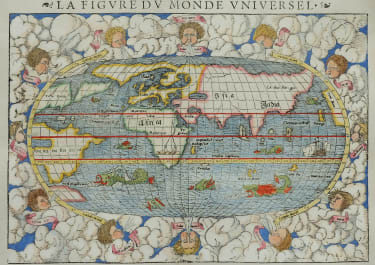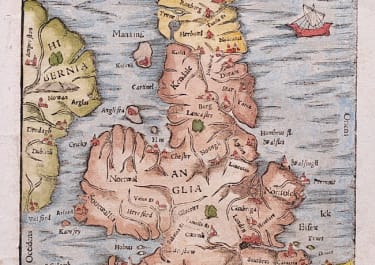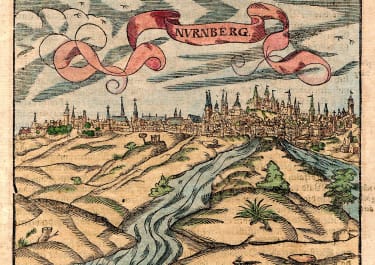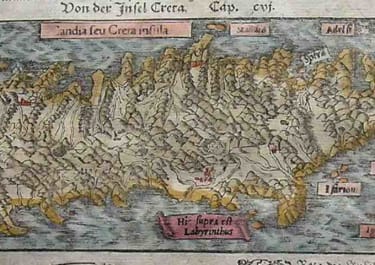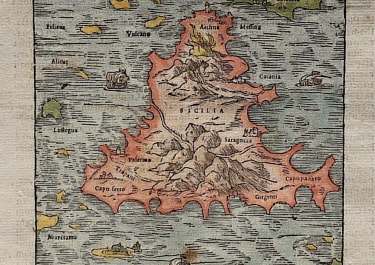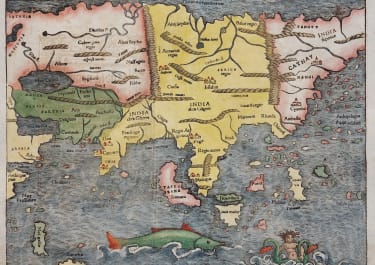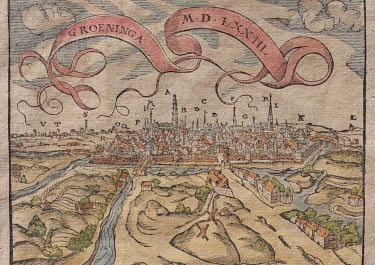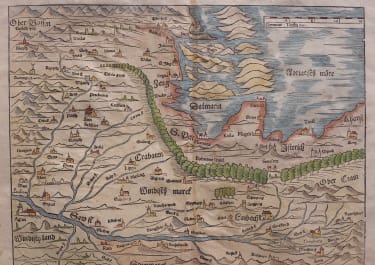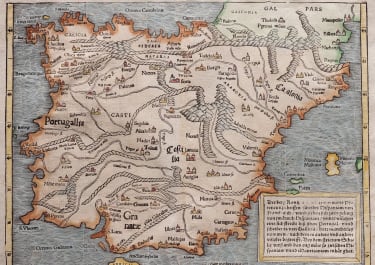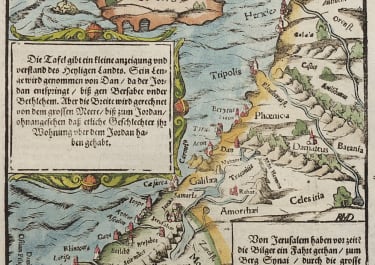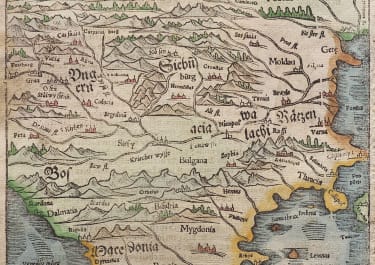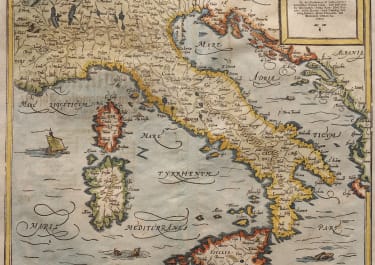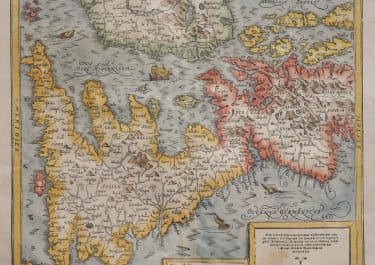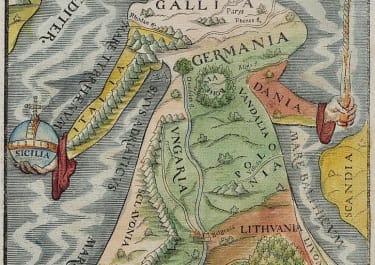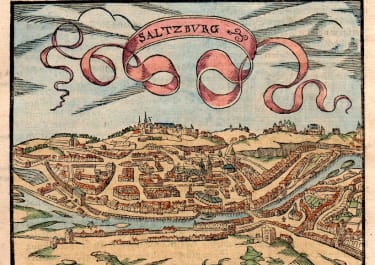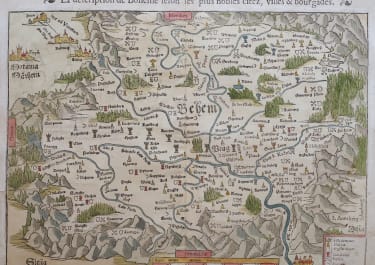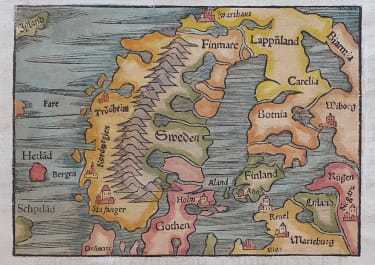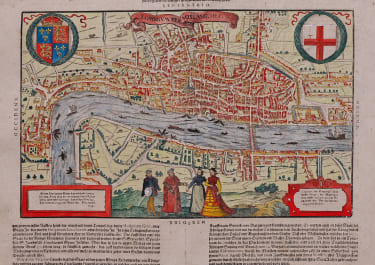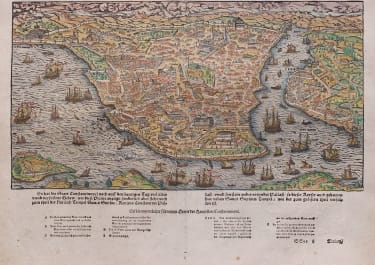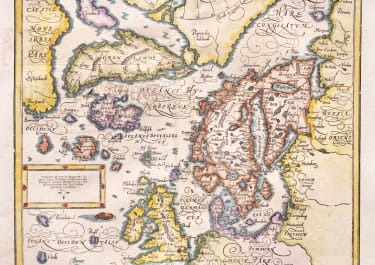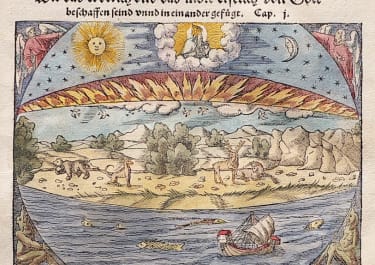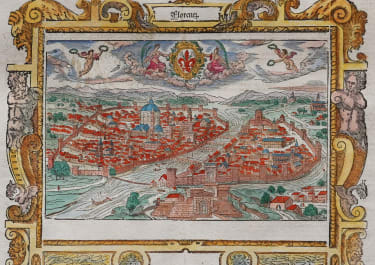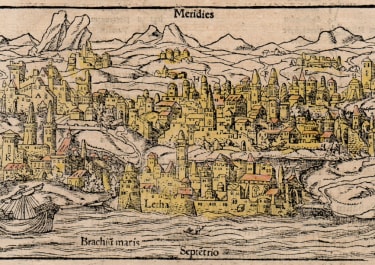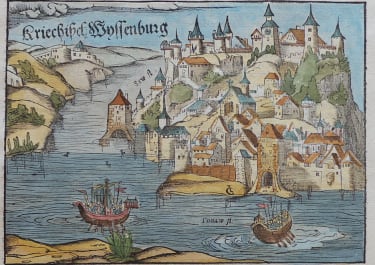EUROPA DAS EIN DRITTHEIL DER ERDEN
Sold
Attractive second state of Munster's modern Europe maps, after Ortelius.
Very detailed from a German edition of Munster’s Cosmographia, one of the most influential geographical works of the 16th Century.
Superb example of Münster's second and final map of Europe, from a German edition of Münster's Cosmographia, one of the most influential geographical works of the 16th Century. Shows fictional islands of Brazil and Demar in the Atlantic.
The map includes sea monsters, sailing ships and fishing boats. It shows pictorial mountains and forests and despite its woodcut technique, elegant calligraphic lettering of regions and places. This map was published in the 1588-edition of Sebastian Münster’s Cosmographia. After 1588, this map was only re-published in the German editions of the Cosmographia of 1592, 1598, 1614, and 1628.
Excellent hand colour
Very good condition
code : M5105
Cartographer : Sebastian Munster
Date : 1588 Basel
Size : 31*36 cms sheet size 45x 37 cms
availability : Sold
Price : Sold
Originally a scholar studying Hebrew, Greek and mathematics, Sebastian Munster (1489-1552) eventually specialised in mathematical geography and cartography. It was this double ability - as a classicist and mathematician - that was to prove invaluable when Munster set himself to preparing new editions of Solinus’ “Memorabilia” and Mela’s “De Situ Orbis”, two classical descriptive geographies containing maps, and his own two greatest works, the “Geographia” and “Cosmographia”. These reflect the widespread interest in classical texts, which were being rediscovered in the fifteenth century, and being disseminated in the later fifteenth and sixteenth century, through the new medium of printing.
The “Geographia” was a translation of Ptolemy’s landmark geographical text, compiled in about 150 AD., illustrated with maps based on Ptolemy’s calculations, but also, in recognition of the increased geographical awareness, contains a section of modern maps. In the first edition of the “Geographia”, Munster included 27 ancient Ptolemaic maps and 21 modern maps, printed from woodblocks. Subsequent editions of the “Cosmographia” were to contain a vast number of maps and plans.
One consequence of Munster’s work was the impetus it gave to regional mapping of Germany, but Munster was also the first cartographer to produce a set of maps of the four continents on separate maps. Most importantly, through his books (the “Geographia” and “Cosmographia” alone ran to over forty editions in six languages), Munster was responsible for diffusing the most up-to-date geographical information throughout Europe.

